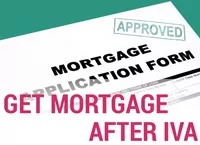Before a County Court Judgement (CCJ) is issued against you some paperwork will be posted out to you asking you to confirm whether you believe that you owe the debt and various information about your financial circumstances.
If you do owe the debt which is being claimed against you but you need time to pay you must complete the Admission Form (Form N9A). It is very important that you complete the Admission Form correctly. If you do not a CCJ may be issued against you requiring you to pay more than you can afford to each month.
The sections of the admission form which you must complete and some guidance notes about how to do this are given below.
Section 1: Personal Details
Record your personal details in this section as directed.
Section 2: Dependants
Record whether you have anyone who is financially dependent on you. This will include children but may also include your partner, spouse or anyone else who is financially dependent on you.
Section 3: Employment
Complete your employment details. If you are self employed make sure you record any debts you currently have with HMRC such as Tax and VAT.
Section 4: Bank account and savings
Record details of your main bank and savings accounts in this section.
Section 5: Residence
Tick the box which describes the accommodation in which you live.
Section 6: Income
Include all forms of income that you receive in this section and how often these are received.
BMD Tip: You should record your income per month. As such if you receive any of your forms of income weekly simply multiply this figure by 52 and divide by 12 to get an average monthly amount.
Section 7: Expenses
List your reasonable living expenses in this section.
BMD Tip: The expenses listed on the actual Admission Form is not comprehensive. To make sure you include all of your allowable living expenses you should review our living expenses guide before completing this section.
Use the guide to find out all of the expenses you should include and the amounts for each that if included will be regarded as reasonable by your creditors. If you believe you have additional expenses for which space is not given in section 7 of the Admission Form make a separate list and attach this to the form. Then transfer the total of your expenses to the bottom of section 7 as required
Have received a CCJ or are you at risk of getting one? Give us a call on 0800 077 6180 or complete the form below to speak to one of our experts
Section 8: Priority Debts
Priority debts are generally arrears on any of your living expenses which you need to repay. These could be mortgage or rent arrears, utility bill arrears, child maintenance or council tax arrears.
Section 9: Court Orders
If you already have any other CCJs issued against you these should be recorded in this section together with the amount you are required to pay each month.
Section 10: Credit Debts (Unsecured debts)
You must list all of your other unsecured debts in this section. These include any credit cards, personal loans, catalogue or store card and any other unsecured debt that you are required to repay.
If you believe you have too many unsecured debts to be able to list them in the space given in section 10, make a separate list and attach this to the form. Then transfer the total of your unsecured debts to the bottom of section 10 as required.
If you are behind with all of your unsecured debt payments, simply write “All” in the lower box in this section.
Section 11: Offer of payment
Your offer of payment is the amount that you believe you can offer to pay towards the debt claimed each month. You should use the following steps to work out how much you can afford to pay towards the debt each month:
A – Work out your disposable income. This is the amount you have left from your income in section 6 after you take away your monthly living expenses in section 7.
B – Deduct any agreed payments towards your Priority Debts (section 8) and any Court Orders (section 9) from your disposable income figure.
C – Any remaining disposable income should then be divided on a pro rata basis between all of your remaining credit debts (see section 10) and the debt which is being claimed for. As an example, if your remaining disposable income is £100/mth and the amount that is being claimed for is 25% of the total amount of your credit debts, your offer of payment should be 25% of £100 which is £25.
What to do once your Admission Form is completed
Once you have completed your Admission form you must then send it directly to the claimant or the address for sending documents shown on the front of the claim form. It is vital that you do this within 19 days from the date that the forms were issued as highlighted on the front of the claim form.
Arrange a call with a Debt Management Expert
Privacy Policy
Your information will be held in strictest confidence and used to contact you by our internal team only. We will never share your details with any third party without your permission.

